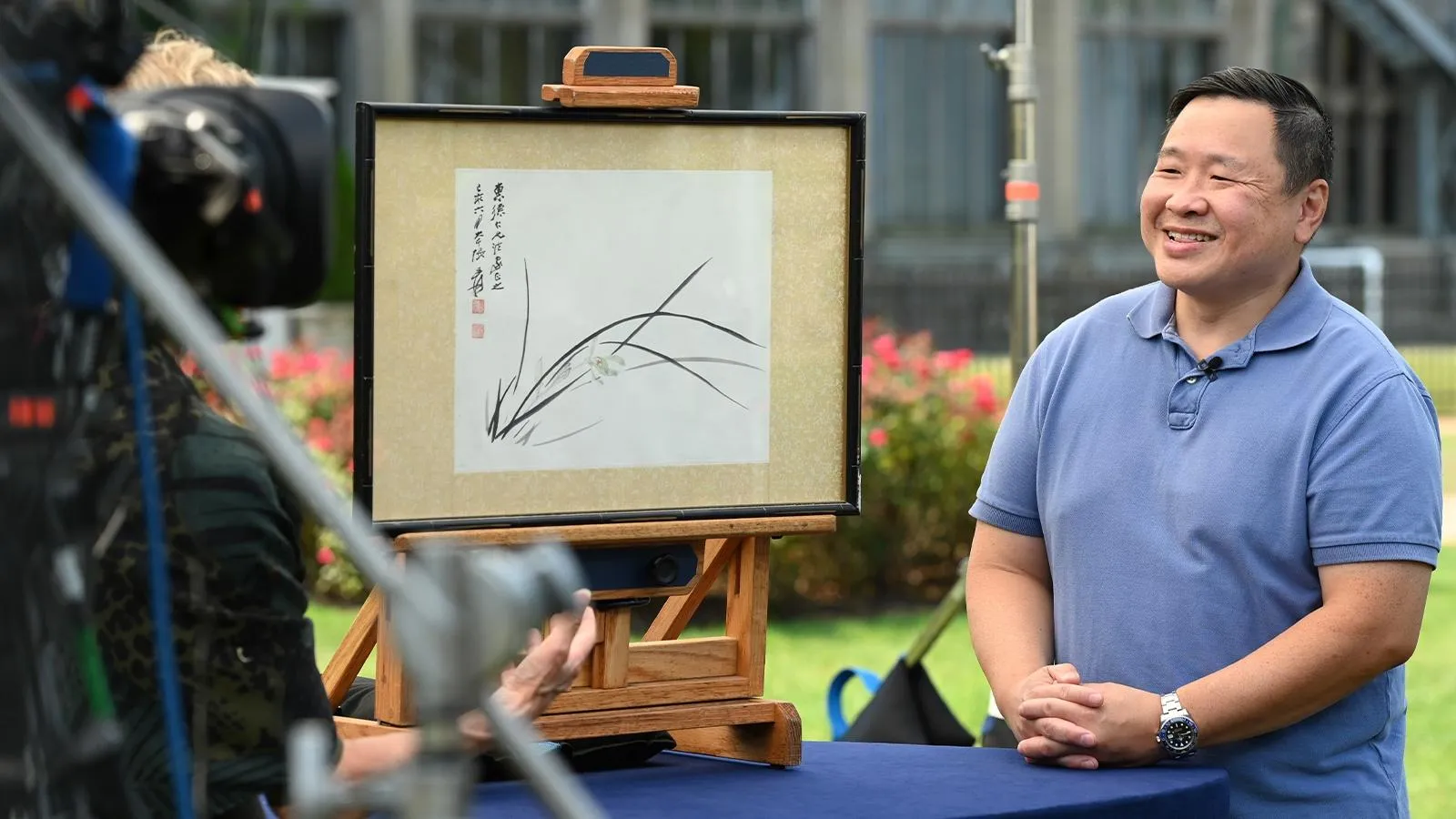GUEST: In the summer, I live in the Adirondacks and we have a little chapel that just celebrated its 90th anniversary. And, um, a few years ago, they were cleaning the basement, and I do all the flowers at the chapel, and they said, "Hey, this is, uh, something for flowers. "Take it and get rid of it, because we never want to see it again." So, I, I grabbed it, and it was covered with grime, and I cleaned it off and the glaze was just amazing. So, I saw that there was a mark on the bottom, but I really couldn't get down to where it came from.
APPRAISER: Okay. It's a piece of Pisgah Forest Pottery by Walter Stephen. Pisgah Forest was started in Arden, North Carolina-- it's outside of Asheville-- in 1926.
GUEST: Mm-hmm.
APPRAISER: Now, Stephen was a real Renaissance man. I mean, a true potter. Small studio, hand-thrown pieces. Uh, he made his own potting tools.
GUEST: Wow.
APPRAISER: Built his own pottery. I mean, this guy was a real, true Arts and Crafts potter.
GUEST: Wow.
APPRAISER: And so the production was, was fairly limited. He's known primarily for making Chinese-style flambé glazes, pâte-sur-pâte decoration, which is like built-up decoration of scenes...
GUEST: Mm-hmm.
APPRAISER: ...and crystalline glazes.
GUEST: Mm-hmm.
APPRAISER: And the interesting thing is that the pottery was, was a little too expensive for the locals. So it was tourist pottery.
GUEST: Oh.
APPRAISER: And that's one of the reasons why Pisgah turns up all over the country.
GUEST: Oh, interesting.
APPRAISER: Yeah. So the rarest of his better work are crystalline pieces. I've seen more pâte-sur-pâte, and they're with traditional scenes of covered wagons and Native... Yeah, I've seen them with the Conestoga wagon and all that.
GUEST: Yeah, and Native Americans.
APPRAISER: Yeah. He actually rode in a Conestoga wagon when he was young, so it was from his, from his youth.
GUEST: Oh, wow.
APPRAISER: He lived-- he was on the frontier. He met Annie Oakley, Buffalo Bill. He was, he was quite the guy.
GUEST: Quite a guy, yeah.
APPRAISER: So you have a piece of, of pottery done by Walter Stephen, but it's exceptional in several ways. Number one, it's crystalline, obviously. It's much larger than they tend to be. Most crystalline pieces are five, six, seven inches tall.
GUEST: Mm-hmm.
APPRAISER: If you see them at all. But on top of that, it's got really beautifully grown snowflake crystals over the entire surface.
GUEST: It's pretty amazing.
APPRAISER: This is not an easy glaze to achieve, especially at this time, before the, the advent of electric kilns.
GUEST: Mm-hmm.
APPRAISER: To get the conditions just right inside of a kiln to grow crystals on the side of a pot is very tricky when you're dealing with a wood or a gas kiln.
GUEST: Yeah.
APPRAISER: So the fact that he was able to achieve this makes it quite exceptional. I don't believe I've seen a crystalline vase this large. I've had some of the pâte-sur-pâte decorated pieces and the flambé, which are the most common, but, uh, to find a beautifully thrown large piece with these green crystals-- another unusual thing, the color green in crystalline is quite rare for the work-- is, uh, is among the best that I've seen. It's not dated, but I'd date this to about 1930 to 1935; I think it's a fairly early piece. At auction, conservatively, I would say between $2,000 and $3,000, but I wouldn't be surprised if it brought, like, $3,000 to $5,000, in that range.
GUEST: Wow.
APPRAISER: It's really quite nice.
GUEST: Wow!
APPRAISER: Yeah. You could look for Pisgah for the next ten, 20 years, and maybe you'll see one this good.
GUEST: Wow, amazing.











